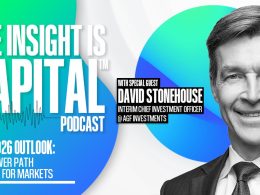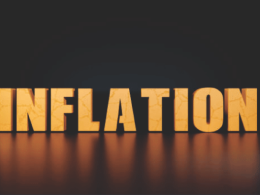by Hubert Marleau, Market Economist, Palos Management
Of all the data points that are printed in press, the GDP is far and away the most important one. Last Friday, the Bureau of Economic Analysis (BEA) gave us an advanced read on how well the U.S. economy fared in Q1.
The U.S.economy expanded at a flashing 3.25% annualized pace. It dramatically exceeded expectations by a country mile. The best guess was 2.8%. The consensus was 2.3% and the range of forecasts was 1.1% to 2.8%.
The BEA explained what happened in the following terms: “The acceleration in real GDP in the first quarter reflected an upturn in the state and local government spending, accelerations in private inventory investment and in exports, and a smaller decrease in residential investment."
These movements were partly offset by decelerations in personal consumption expenditures and nonresidential fixed investment, and a downturn in federal government spending. Imports, which are a subtraction in the calculation of GDP, turned down.”
On the surface, it would appear the economy is not as strong as the eye-catching headline suggests. Excluding inventories, trade and household spending on durable goods, the economy grew at just a 1.0% annual rate.
That is what occurred on the demand side of the economy but it's not the full story. The BEA never gives more than a skin-deep analysis. In other words, it is up to market economists and investment strategists to look under the hood and try to figure it out what runs the economic engine.
An economy is a very complex system. The complexity stems from the fact that it has two faces--a production side and a spending side. In other words, workers with the aid of capital produce goods and services for wages and profits which in turn they sell to consumers and investors for a price.
In a perfectly tuned market economy, demand clears what is supplied at an agreed price. This supply/demand equation brings forth the following question. What comes first the chicken (demand) or the egg (supply)? Based on write ups by columnists on what went on in the U.S., one would conclude that there is only one facet of the economy that counts--the chicken.
That is the wrong way to see things. I invoke Say’s law--- supply creates its own demand. As a rule, when demand does not consume what is produced, it’s because the price is not right. And, this is what is happening, price levels are too high to clear the market. In the March quarter of 2019, American workers generated at a seasonally adjusted annual rate $21.0627 trillion worth of goods and services for a 3.8 percent annualized rate of increase from Q4/2018.
During this short period under review, employment accounted for only 0.1% of the gain, productivity for a whopping 2.8% and inflation for 0.9%. Unfortunately, aggregate spending increased at the seasonally adjusted annual rate of 3.3%--not enough to swallow all of the output produced by the increasing efficiency of workers. Put simply, not all of the workers’ production was taken up by the buyers, creating the surplus of 0.6% between quantitative supply and quantitative demand.
The 0.6% gap ended up on shelves and in warehouses.—-$128 billion on an annualized basis. This phenomenon is not new. The Commerce Department reported that changes in private inventories were also up in the third and fourth quarters of 2018–increasing $92.7 billion and $107.5 respectively. Goods come from variable sources.
They are either imported from abroad or made in America. But, industrial production has slipped and imports have fallen. So what is it? In my view, there is only one explanation, prices are not low enough to clear the market.
Taking into account that both the money supply (M2) and personal income are running at the annual rate of 4.0%, while producers are pushing the N-GDP at the annual rate of 5.0%, price levels will need to fall to attract buyers and/or consumers and will need to tap their financial resources to pay the demanded price.
It will likely be a bit of both because 1) large productivity gains will tend to offset rising wage rates, decrease unit labour cost thus lowering prices and 2) elevated levels of personal savings suggest that the consumers have room to spend.
I estimate, through a proxy that takes into account real output, employment and hours work, that productivity increased 2.0% from a year ago and that the amount of money that individuals saved is about 8% more than they did last year.
In this regard, the University of Michigan Consumer Sentiment Survey shows that confidence has recovered from its swoon early in the year. The majority of Americans are saying that they are personally experiencing improvement in their finances.
This renewed optimism led to a strong pick up in retail sales in March, rising 1.6% -- the best month-over-month increase in a year and a half. Things are looking up due to the fact that the quarter ended on a strong note.
Income and wages are rising faster than inflation because productivity is rising, the Fed is on a wait-and-see monetary stance and the global outlook has improved.
The ECB is launching a new program of monetary stimulus, Japan passed a new fiscal stimulus and China has enacted tax cuts. It’s easy to punch holes, it makes for a flashy front page story. But, it is not the story.
The big story is PRODUCTIVITY. Productivity has been on a tear since the first quarter of 2017. Year-over-year gains in productivity went from minus 0.3% to plus 2.0% in the first quarter of 2019. Despite living proof, the majority of investment strategists and economists are either supply-side skeptics or ignorant of the trend.
As a matter of fact, there are hardly any comments in the press about the productivity phenomeum. Yet, there are emerging signals that the supply side of the economy is becoming energized. Workers are increasingly using tools, machines and computer-run robots to efficiently produce goods and services. It’s not the first time that I have brought this up on these pages.
It’s been my mantra for years on which I have based my optimism on the future. For years, serious amounts of capital have poured into information processing equipment,industrial equipment, software and R&D. For example, in the first quarter of 2019, businesses invested $1.558 trillion in these efficiency-producing programs for a yearly increase of 7.1%.
I see that a few are closing ranks. Macroeconomic Advisers, a modeling firm, has a higher year-over-year estimate for productivity gains than mine for the first quarter of 2019. They have an estimate of 2.3% versus my 2.0%. Between 2010 and 2017, productivity growth averaged just 1% per year.
Renaissance Macro Research is of the view that the economy is in the “Goldilocks Scenario” of good growth and benign inflation---all because of productivity. In some ways, today’s economy feels like the late 1990s.
The last time the economy experienced a supply-side acceleration was in the 1997-2000 period----growth was robust, unemployment was low, inflation was meager, wages and profit were rising. Moreover, the Fed was able to avoid raising rates for much longer than originally expected and had enough leg room to trim rates when the global economy wavered in 1998.
It’s not that I think that the potential growth is about to shift into high gear, running at the annual rate 3.0% or higher. But what I see is that productivity is replacing labour as the engine of growth. In connection, I revised my previous two-plus-two economic pattern to 2.2 percent for growth and 1.8 percent for inflation.
Copyright © Palos Management















